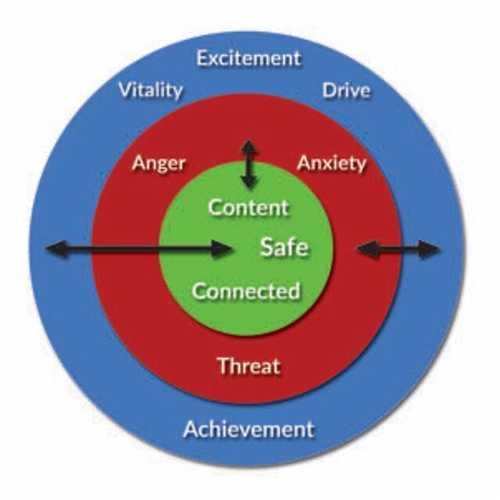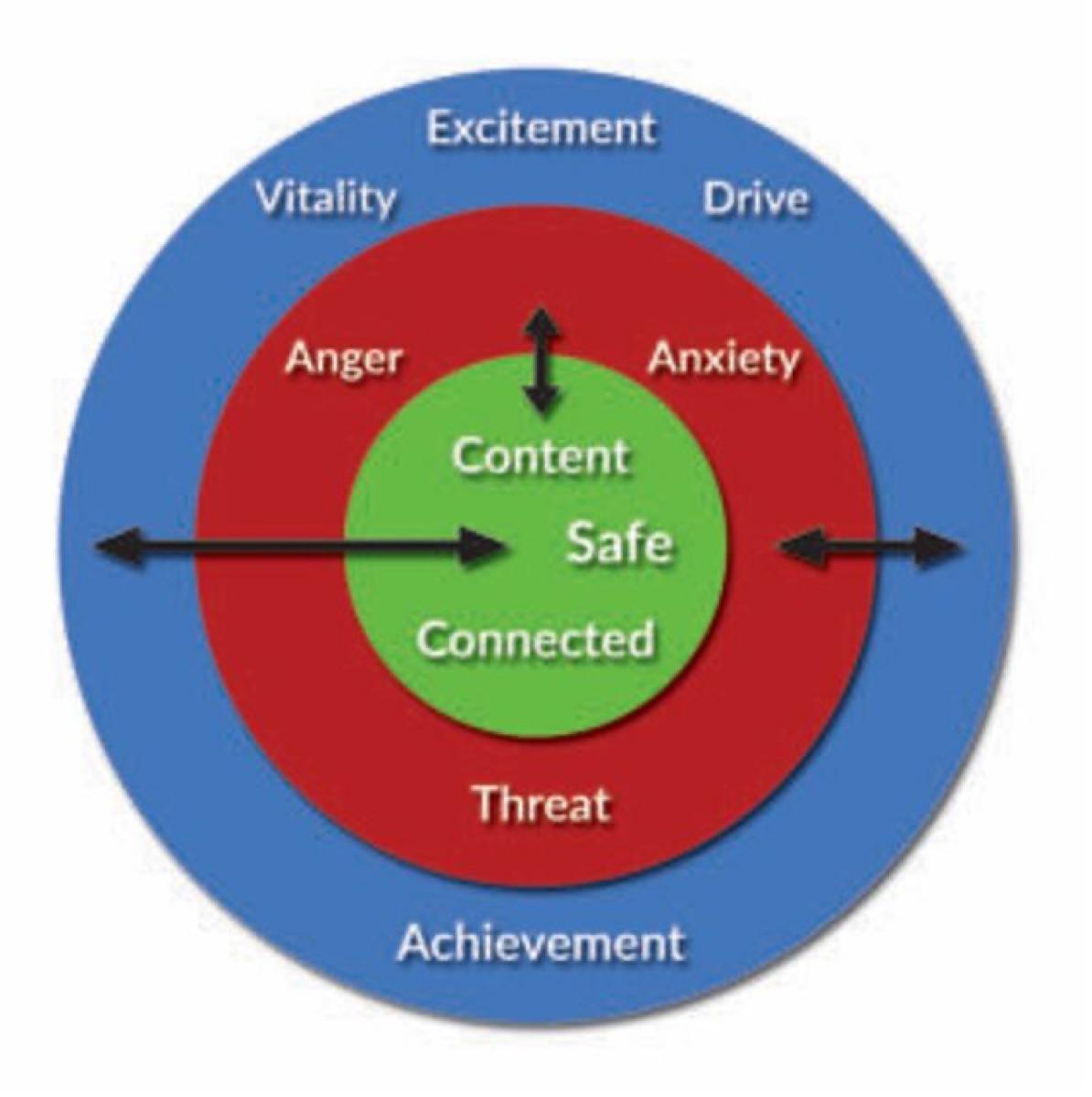Awareness as a Tool: The “Circle of Life”
Curated from: psychologytoday.com
Ideas, facts & insights covering these topics:
16 ideas
·3.1K reads
28
Explore the World's Best Ideas
Join today and uncover 100+ curated journeys from 50+ topics. Unlock access to our mobile app with extensive features.
The Threat Physiology
The essence of chronic mental and physical disease is being exposed to sustained levels of threat physiology. Our body is consuming resources for survival, and we cannot heal in this condition. Healing can only occur when we feel safe enough to replenish our reserves. But a major block to seeking safety is not recognizing our body’s cues that we are in fight-or-flight mode. There are many ways of it covering it up, but our body is still in high gear.
43
481 reads
Awareness And Survival
Awareness is at the core of both survival and thriving. These are separate, and learned, skills.
Survival is instinctual and includes whatever strategies we have embedded over our lifetime. However, many of the actions we have acquired are not only ineffective but can make situations worse. Acquiring effective stress-processing skills is important.
43
347 reads
Awareness And Thriving
Thriving is not as instinctual and must be cultivated and nurtured. If we are trying to use pleasant experiences, power, and material possessions to compensate for unpleasant emotions basic to survival, it can’t and doesn’t work. We cannot outrun our mind.
The key to thriving is developing a working relationship with anxiety and anger; then we are able to create the life we want.
Just solving problems doesn’t yield a good life. We must live a good life to have a good life.
48
269 reads
Awareness And Practicality
Having awareness is critical. We can’t solve problems in any domain without understanding details from both our perspective and that of other involved parties. If we are projecting your views onto a given situation, we are not going to come up with consistently viable solutions. For example, we may have repeated troubles with relationships at home and work and can’t figure out why.
44
237 reads
Putting Awareness To Work - Step 1
The first necessary step in using awareness is looking for clues that we are not as aware as we might think. By the way, if we think we are “aware” or “enlightened,” then we have already demonstrated that we are not aware. Any labels, positive or negative, block awareness.
Seeing our un-awareness will allow us to deepen our awareness and start us down the pathway of using awareness as a tool.
44
201 reads
Putting Awareness To Work - Step 2
Second, understanding and nurturing different types of awareness enables us to learn skills in each of these arenas. Here are four suggested types to use as a baseline.
- Environmental
- Emotional
- Judgment, or the stories we tell ourselves
- Ingrained patterns
43
199 reads
Environmental Awareness
Environmental awareness is a tool by which we train our brain to connect to specific sensory inputs. It is used daily, and it shifts our attention away from disruptive thought patterns. With practice, it becomes automatic and calms our mind.
40
177 reads
Emotional Awareness
Emotional awareness is difficult in that we are training our brain to experience pain that we have been suppressing or repressing. Remember, emotions reflect sensations generated by our various physiological states—safety versus threat. They drive our behavior to avoid danger and seek safety. Since mental pain and physical pain are processed in a similar manner, emotional pain actually hurts physically. Why would we want to feel it? But suppressed/repressed emotions fire up our body’s nervous system and chemistry so that we feel even more.
44
157 reads
Judgment, Or The Stories We Tell Ourselves
Awareness of the stories we create about our life to make sense out of where we fit into the world is particularly necessary. Many of the stories have been programmed in by our family, friends, and society. A high percentage of them are actually cognitive distortions that continue to keep us ramped up even when our circumstances are good. The good news is that we don’t have to do anything about them, because they are not based on reality. We can just become aware, separate from them, and move forward. If we choose to prove them wrong or ignore them, we inadvertently reinforce them.
42
131 reads
Ingrained Patterns
Ingrained patterns are the essence of who we are; they make up our life view and evolve to become the lens through which all new information is processed. Since the human brain is programmed by interacting with others, each individual is incredibly unique. The early input is critical as it sets the trajectory for the rest of our life. By definition, we cannot see these patterns without outside help, as they are our frame of reference.
Creating a clear awareness of our programming is a powerful way of switching our life from a reactive to a creative mode.
40
118 reads
Awareness Is A Means To An End, Not An End In Itself
Once we become familiar with and skilled in developing these levels of awareness, we can actively use them as tools to calm down and redirect our nervous system. Some people make the strong argument that awareness is the only tool we need to heal. We know that we can’t “fix” ourself; our attention is focused on the problem, and from a neuroplasticity perspective, we are reinforcing it.
41
121 reads
Awareness - Separation - Redirection
With awareness, we can watch ourselves respond; we are getting out of our own way and allowing ourself to heal. We become an observer of our own healing.
Remember, the steps required to create neuroplastic changes in our brain are:
- awareness
- separation (creating some “space” between us and our problem)
- redirecting our attention
42
132 reads
The Circle Of Life
Finally, the “circle of life” can be used as a foundational template for implementing awareness into our daily life.
The circle of life consists of 3 concentric circles. The inner (green-coloured) core is the place where we feel safe, content and connected; the outer (red-coloured) circle is the place where we feel anger, anxiety and threat; and the expanding (blue-coloured) circle is the place where we feel drive, excitement and achievement.
42
146 reads
How To Use The Circle Of Life
On any given day or moment, we can quickly assess our relationship with any of the four kinds of awareness and see which part of the circle we are in. We then can choose to use our tools to move in whatever direction we want. But we can’t redirect unless we know where we are starting from.
41
132 reads
The Baggage Of The Circle Of Life
The circle of life provides a foundational reference point of awareness for embarking on any healing journey. The challenging aspect of using it as a tool is that we must allow yourself to feel everything—but only as we can tolerate it. Allowing ourself to feel anxious is difficult because no living creature is programmed to allow vulnerability; the consequences in nature are harsh. Yet, with language, we have the capacity to develop complex relationships, which requires vulnerability. It is a frustrating aspect of the human condition.
41
131 reads
The Takeaway
Once we are aware of where we are at in the circle of life, we do have choices. We can remain where we are—even if we are in the red—take a “refueling break” by entering the green center, or move on by engaging in blue activities.
Freedom is being fully immersed in every element of our circle of life—on our own terms. And it begins with awareness.
41
122 reads
IDEAS CURATED BY
CURATOR'S NOTE
We must learn to become aware of our physiological state so that we can choose where and when we want to go or stay. Whatever set of tools we decide to implement begins with awareness. Do you think you know where in the “circle of life” you really are at this minute?
“
Xarikleia 's ideas are part of this journey:
Learn more about motivationandinspiration with this collection
How to network effectively
How to read body language
How to find common ground with others
Related collections
Similar ideas
Read & Learn
20x Faster
without
deepstash
with
deepstash
with
deepstash
Personalized microlearning
—
100+ Learning Journeys
—
Access to 200,000+ ideas
—
Access to the mobile app
—
Unlimited idea saving
—
—
Unlimited history
—
—
Unlimited listening to ideas
—
—
Downloading & offline access
—
—
Supercharge your mind with one idea per day
Enter your email and spend 1 minute every day to learn something new.
I agree to receive email updates

